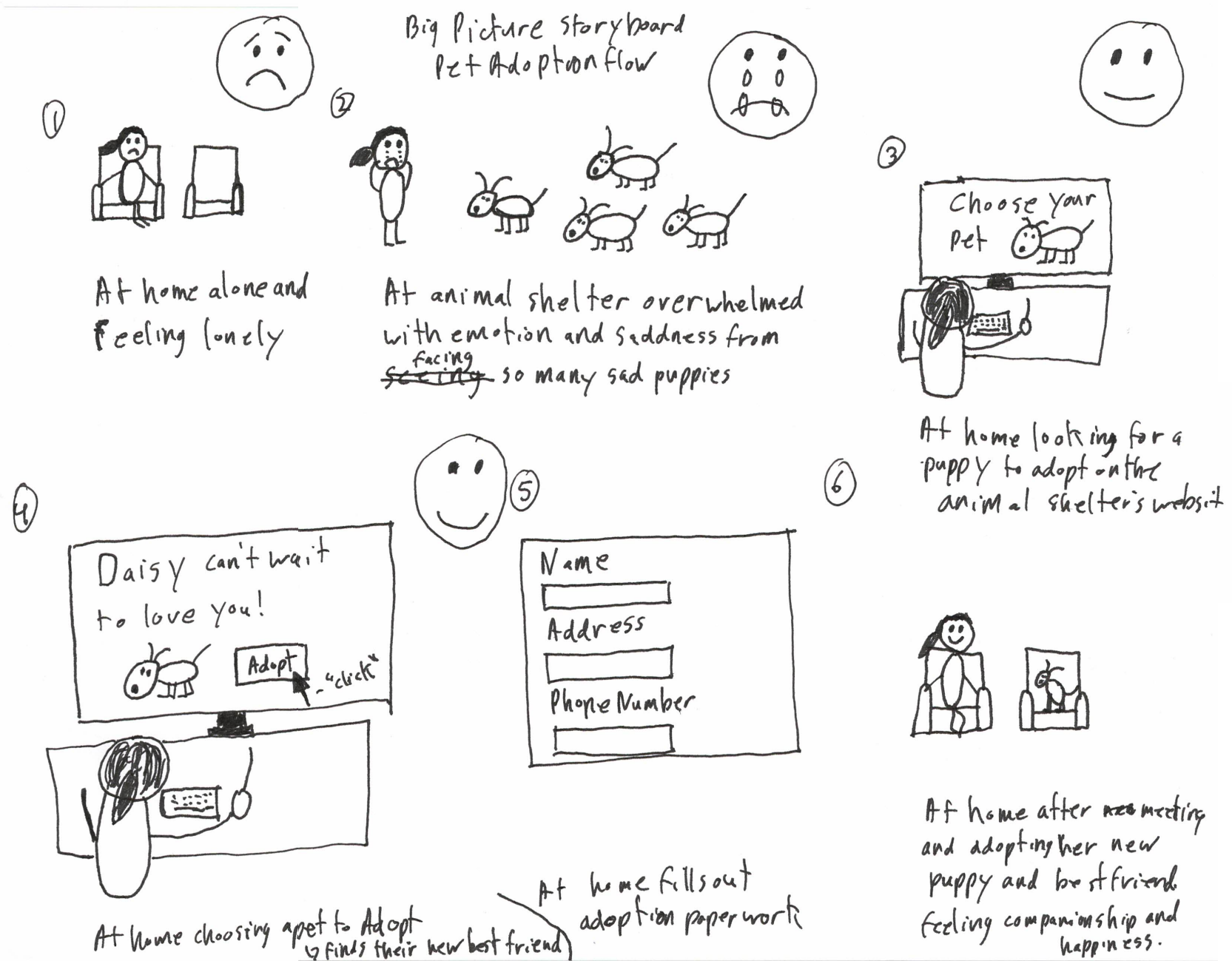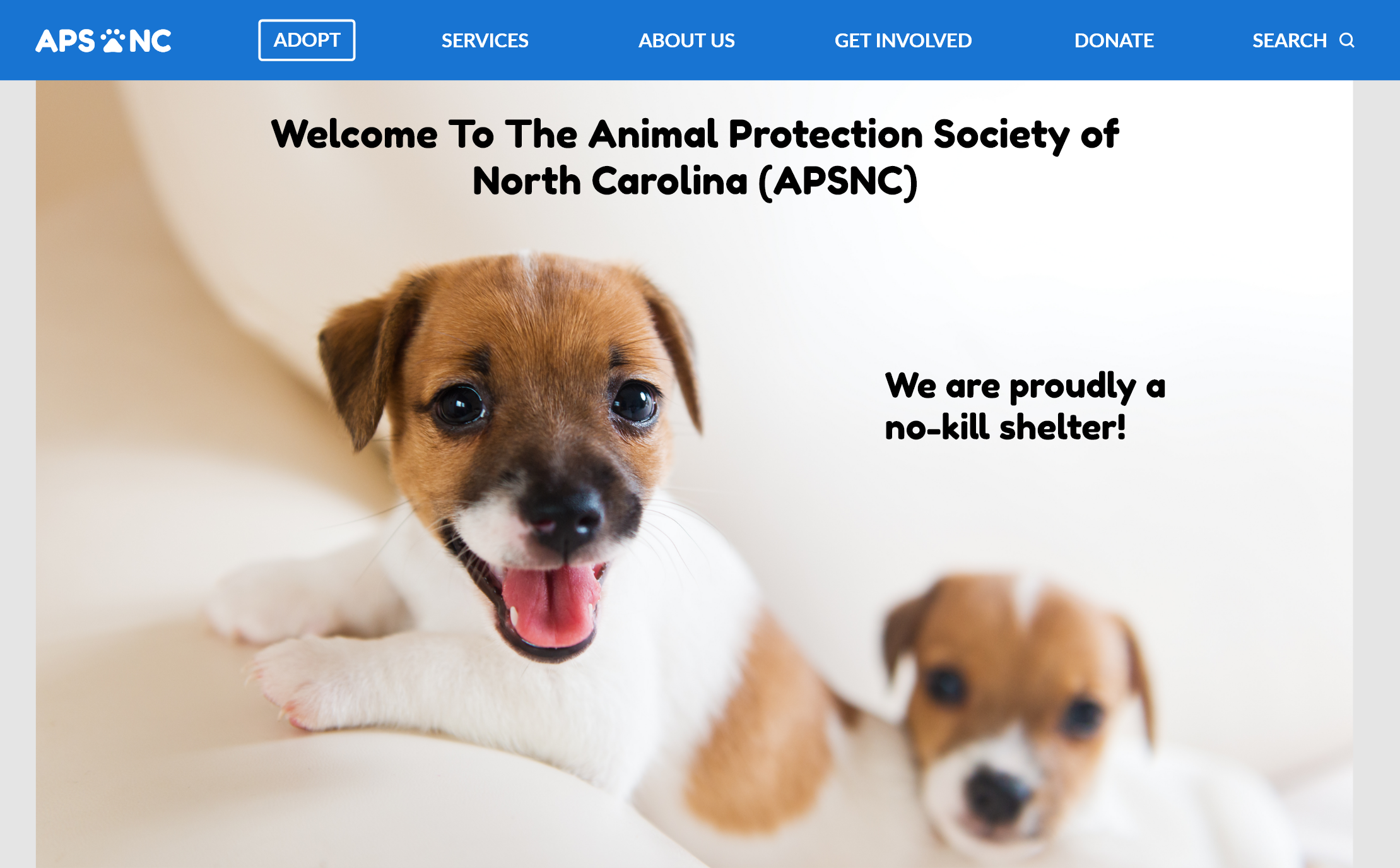Overview
What is the Animal Protection Society of North Carolina (APSNC)'s website?
A conceptual interactive prototype to help pet adopters find and adopt a pet from an animal shelter.
What makes APSNC’s website unique?
The key constraints for this project were that: (1) users can choose a pet to adopt without having to physically got to the shelter and (2) all of the steps and documents necessary to adopt a pet are clearly provided on the website so that users do not get to the shelter to adopt a pet and find that they are missing something, unlike many other animal shelters.
Roles & Responsibilities
- Lead the user research.
- Did the User Experience Design including creating a persona, user journey map, wireframes, and mockups.
- Created low-fidelity and high-fidelity prototypes to show the full user experience.
- Completed two (2) rounds of usability testing.
Problem and Process
Create an MVP prototype to help adopters find and adopt a pet using an animal shelter's responsive wesbite.
And assume that the website will provide adopters everything they need to adopt a pet.
Project duration: June 2022 to September 2022
Understand the experience
Empathize with the user
Understand the user's journey
Design lo-fi and hi-fi prototypes to test concepts
Big Picture Storyboard
Scenario: A fast and easy way to adopt a pet from an animal shelter using an animal shelter's website.
Problem Statement: Juanita is a retiree who needs to adopt a dog from an animal shelter's website because physically choosing from all of the dogs at an animal shelter is too emotional and painful for them.
Goal Statement: Our animal shelter website will let users adopt a pet in a way that protects their feelings which will affect pet adopters by allowing them to choose a pet to adopt and fill out all of the adoption paperwork through the animal shelter's website.
Storyboard Scenario: Juanita is a retiree who needs to adopt a dog from an animal shelter's website because physically choosing from all of the dogs at an animal shelter is too emotional and painful for them.
Persona
Based on the user research and identified common pain points, we identified a main participant in the story.
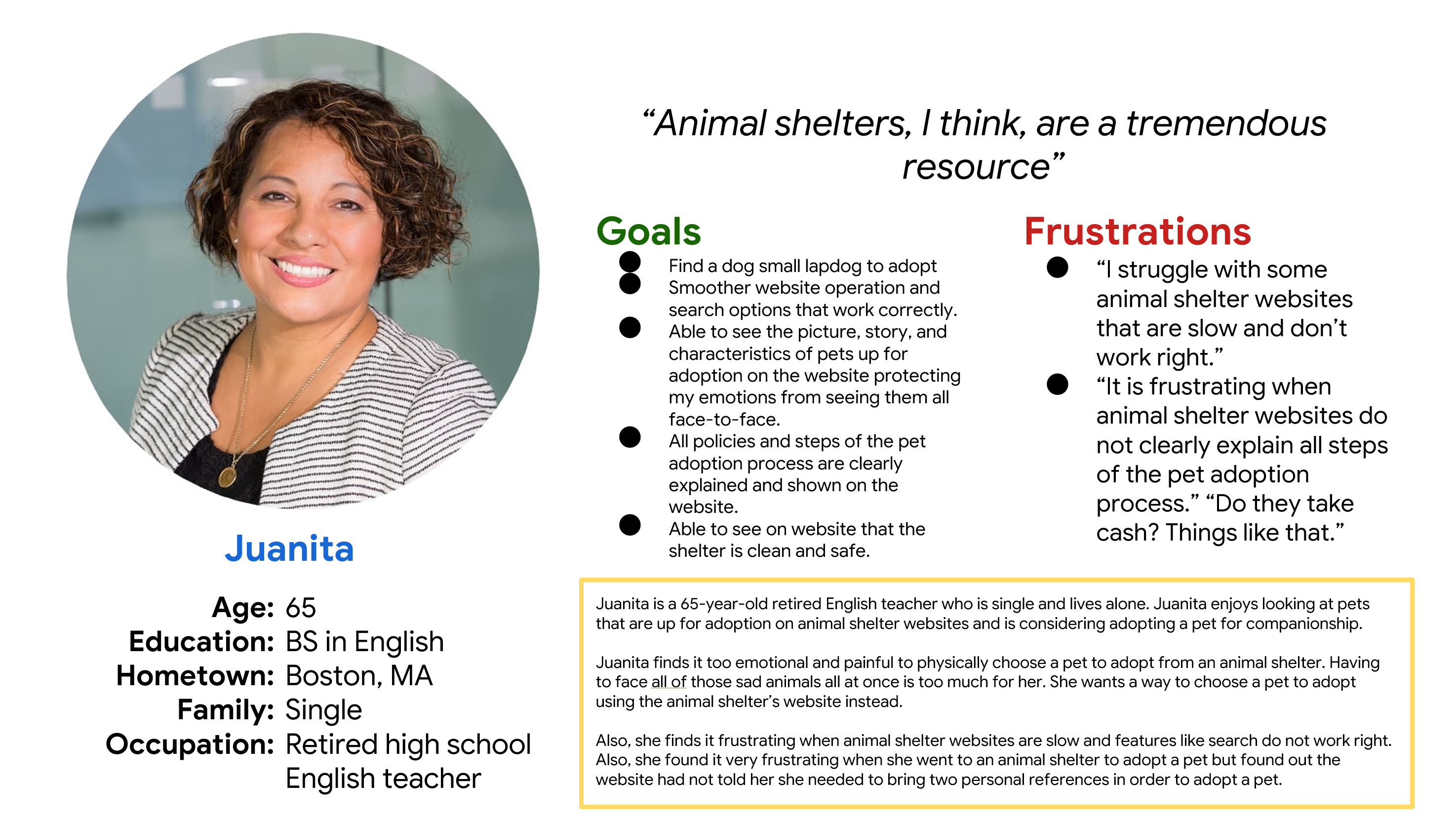
For this persona, we identified the following problem statement which gives a clear description of our users' need that we will work to address:
Problem statement: Juanita is a retiree who needs to adopt a dog from an animal shelter's website because physically choosing from all of the dogs at an animal shelter is too emotional and painful for them.
User Journey Map
A user journey map for the persona helped us identify key positive and negative experiences a user has when working to achieve their goals with our product.
We took these insights and used them to think of opportunities that will improve the negative experiences and build upon the positive ones. We also considered accessibility and explored ways to reduce the impact of designer bias.
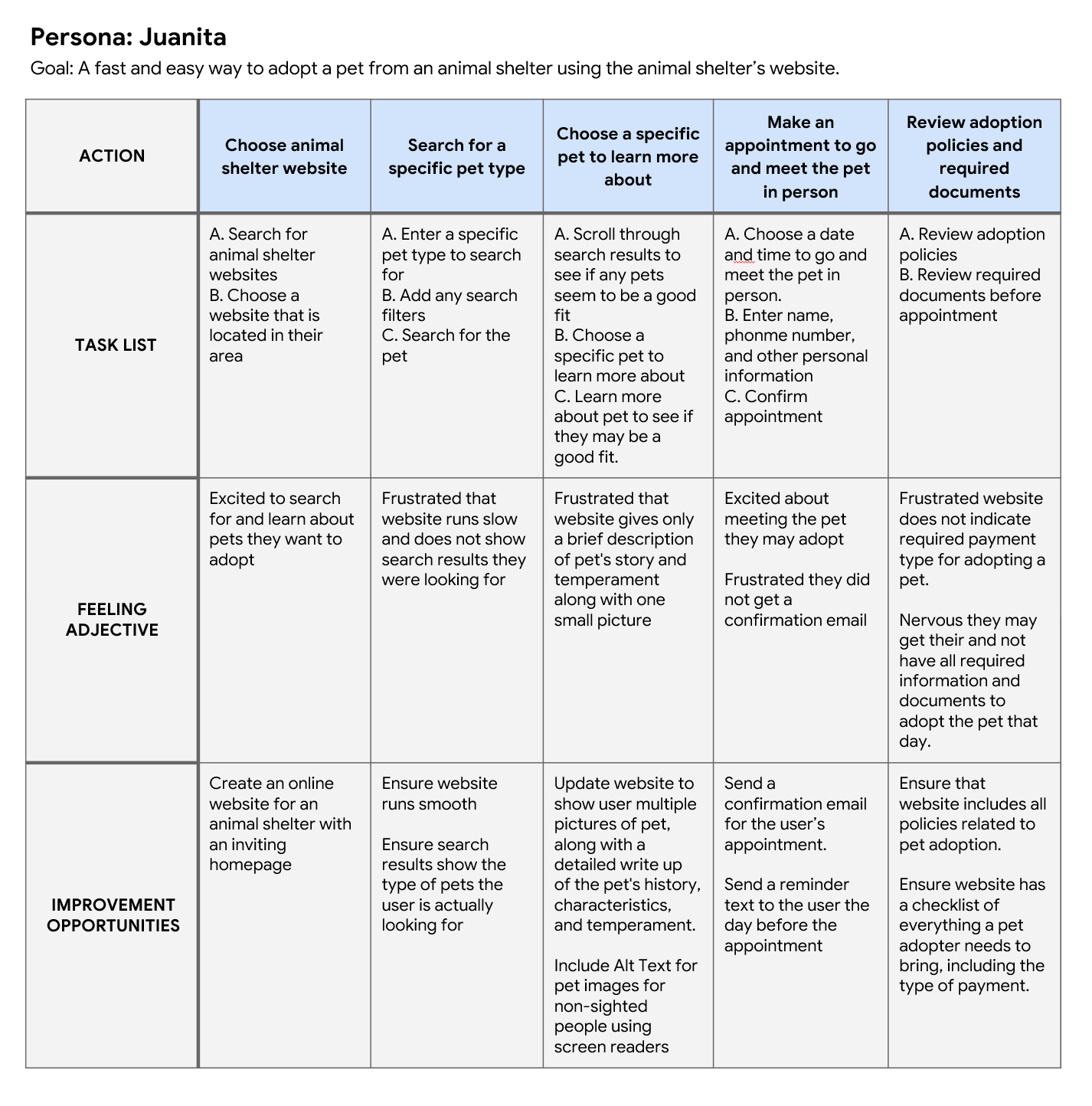
Low Fidelity Prototype
A low fidelity prototype established a basic experience based on early solution concepts that encouraged useful stakeholder feedback.
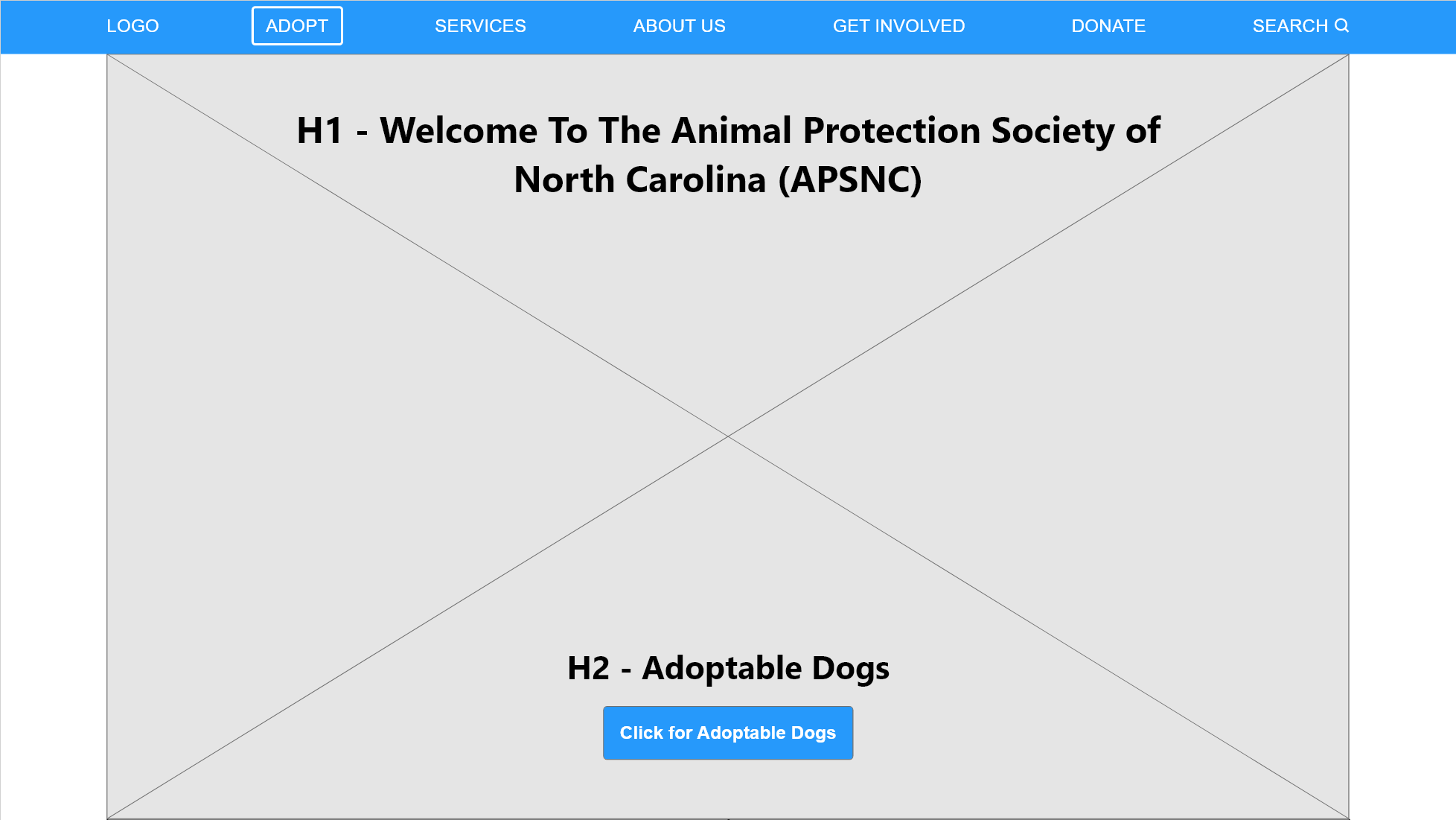
The low-fidelity prototype connected the primary user flow of choosing a pet to adopt, filling out the paperwork, choosing an appointment time, and confirming the appointment time to meet the pet and finalize the adoption.
High Fidelity Prototype
A high fidelity prototype established a realistic experience based on refined solution concepts that encouraged useful stakeholder feedback
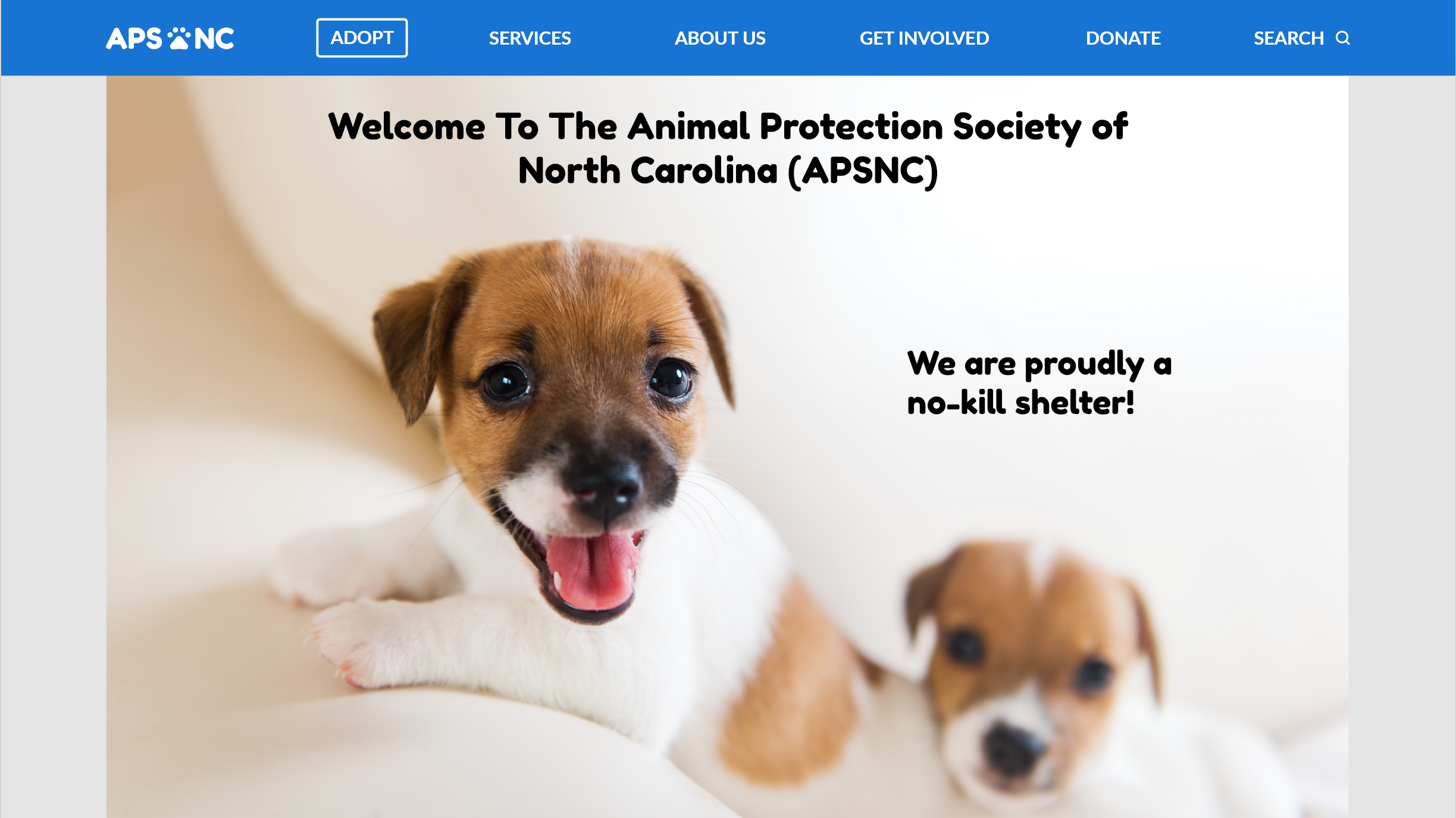
The final high-fidelity prototype presents a cleaner user flow for choosing a pet to adopt, filling out the paperwork, choosing an appointment time, and confirming the appointment time to meet the pet and finalize the adoption.
